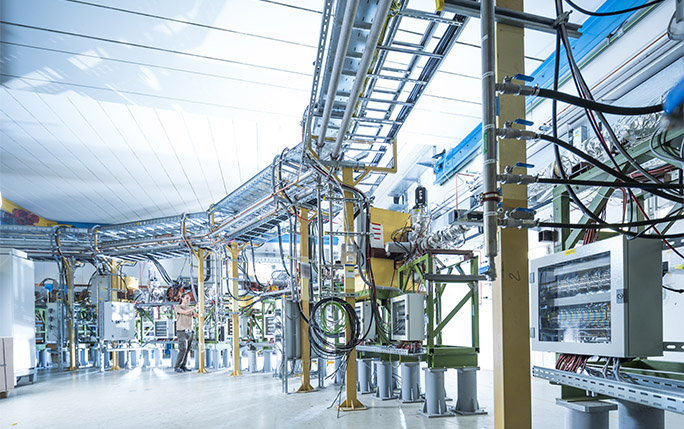Storage ring CRYRING in operation for the first time at GSI/FAIR

AVA Partner GSI, based in Darmstadt, is the German national centre for heavy ion research and hosts a large accelerator facility where high beam intensities for heavy ions are accelerated up to several GeV/u. Last year, we reported on the progress of the construction of its Facility for Antiproton and Ion Research (FAIR).
The GSI/FAIR accelerator facilities have now successfully started a new operating phase to conduct scientific experiments as part of the so-called FAIR Phase 0 program. From now until July, scientists from all over the world will investigate numerous research questions in various fields such as nuclear physics, materials research, and atomic physics, in the framework of approximately 80 approved experiments.
The complete accelerator facility will be in operation: the linear accelerator UNILAC, the ring accelerator SIS18, the experimental storage ring ESR, the fragment separator FRS, the high-power laser PHELIX and, for the first time, the new FAIR storage ring CRYRING will be available for use by the researchers. The science run at the GSI facilities is part of this experimental program, which already offers excellent experimental opportunities while FAIR is still under construction.
CRYRING is a storage ring that can also decelerate particles. Within the proposed Facility for Low energy Antiproton and Ion Research (FLAIR), CRYRING would decelerate antiprotons for precision experiments in the future. Studies within AVA pave the way for advanced diagnostics of such low energy beams, as well as beyond state-of-the-art experiments with low energy antiprotons.
During the previous shutdown, numerous maintenance and modernization measures could be implemented to further prepare the existing facility for future operation as a pre-accelerator of the FAIR facility. Due to the Corona pandemic, the usual travel of domestic and foreign guest scientists remains limited during this experiment period. However, the shutdown was also used to expand remote access to parts of the facility for the researchers and improve electronic communication in order to enable the best possible performance of the scientific work.